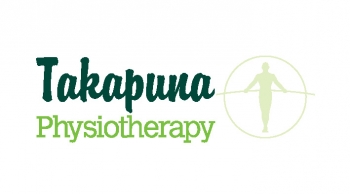Common injuries and how to prevent them
1) Knee pain
There are several structures around the knee that can cause knee pain in runners. These include the iliotibial band, the patello-femoral joint and the patellar tendon. Due to the repetitive nature of running, the structures around the knee are subjected to the same forces over and over again. If there is a slight biomechanical dysfunction, i.e. if your leg lands at slightly the wrong angle every time you land, this can cause overloading of a particular point in your knee and therefore over time, can cause pain. Women are more susceptible to this type of knee pain due to the fact that they generally have weaker hip muscles and wider hips than males. Here are some basic things that you can do to prevent this type of knee pain:
forces over and over again. If there is a slight biomechanical dysfunction, i.e. if your leg lands at slightly the wrong angle every time you land, this can cause overloading of a particular point in your knee and therefore over time, can cause pain. Women are more susceptible to this type of knee pain due to the fact that they generally have weaker hip muscles and wider hips than males. Here are some basic things that you can do to prevent this type of knee pain:
- Strengthen the hip and core muscles to give your knees a strong base to work from. These exercises can be done at home or in the gym depending on what you have access to. Physiotherapists are well equipped to put specific exercises together to help you in this area.
- Taping can be helpful if you have had knee pain in the past. This can help to keep the kneecap in the correct alignment as you run.
- Using a foam roller to massage your leg muscles can prevent any build up of tight painful areas. The areas that often need this are the iliotibial band (down the outside of your thigh), hamstrings, quadriceps and calves. These can be purchased for $45 incl P+P by contacting www.takapunaphysio.co.nz.
- Cross training can help to build up strength in other muscles that will support your running. This could include rowing, cycling, aqua jogging and swimming.
- Include some off road running into your training programme. This will activate different muscles and will help to prevent injuries that occur due to the repetitive action of running.
2) Achilles pain
The achilles tendon is the strong tendon that attaches the calf muscles to the heel bone. Pain in this area is common with runners, especially those aged 30+. This pain is often due to microtrauma in the tendon which the body is unable to heal quickly. Unfortunately the body's response to this microtrauma gets slower as we get older! The achilles tendon needs to be managed in a specific way to make sure that it does respond and repair the damaged area. This includes stretching and strengthening exercises and often a decrease in training load. Other factors such as foot type, calf flexibility, running technique and core strength can play a major role in achilles pain. A thorough assessment of these factors by a physiotherapist will enable the quickest return to training. There are several ways that you can avoid developing achilles pain:
- A general lower limb and core strengthening program, either home or gym based.
- Using a foam roller on your calves can decrease the build up of tension and therefore aid flexibility.
- When buying running shoes head to a shoe store that is equipped with a camera to look at your running style. This will enable them to fit you with the best shoe for your body.
- Take care when increasing your running load. The achilles tendon and other tendons in your body need to be loaded gradually to cope with what you are asking of them. Hence, a program that gradually increases your running load will help the achilles to strengthen without injury.
3) Stress fractures
Common areas for stress fractures to occur in runners are the tibia, navicular and femur. These injuries occur when the load put on the bone is too great for it to handle. These injuries often take several months to repair and require intensive rehabilitation. It is therefore very important to try and prevent their occurrence. Ways to prevent these type of injuries include:
- Avoid rapid increases in training load. Like tendons, the bones need time to adapt to the load placed on them by running.
- A general lower limb and core strengthening program will ensure that much of the load put on the body with running is taken up by the muscular system rather than the bones.
- Appropriate nutrition is very important during marathon training and is essential for bone health. It is important to replace the energy that you have expended during training with adequate food and fluid. This should include the three major types of food: carbohydrates, protein and fats.









